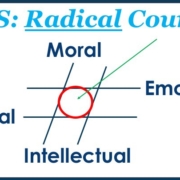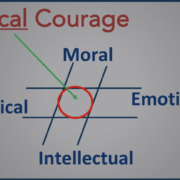Here’s how the most respected leaders simplify.
Do you find that getting everyone in your company on the same page is a struggle, especially in a hybrid work environment?
The benefits of everyone rowing in the right direction and cadence reduces anxiety and distress, increases cooperation and innovation, and avoids wasting time in misunderstandings.
The challenge, of course, is that our businesses are both complicated and complex.
Complicated means you have many connected elements: step-by-step processes to follow so things work properly. A car engine is complicated – the engine, transmission, steering, brakes, etc. must integrate for the car to function.
Your business is also complex, meaning interwoven. You have multiple dependencies outside your control, such as suppliers, partners, regulations, laws, competitors, technology, social changes, etc. These variables are constantly interacting, often creating novel situations and arrangements.
Inside your head, your business starts to look like this:

Imagine trying to explain this picture to your employees. Your complexifying would be incoherent. People would take away what they wanted and discard the rest. The result: employees are on different pages, pulling in different directions, and your business wastes time and money in misunderstandings, relitigating decisions, and heightened distress.
The likelihood that you are complexifying is worse than you imagine.
I asked my Chatbot to draw a picture of complexity arising from the interaction of only two variables over time.
One of the examples of this picture the Chatbot provided was the interaction between Market Demand and Supply Chain Efficiency:
An increase in consumer demand can lead to complexities in the supply chain, especially if the supply chain isn’t agile enough to adapt. This scenario can result in stock shortages, delayed deliveries, or increased costs. Conversely, an efficient supply chain facing low demand can lead to overproduction and excess inventory.
Instead of trying to explain the picture above, you could simplify the matter using a double-axis chart like this:

You can plot where you are on the chart and take actions that move you to the upper right quadrant. Everyone can visualize the situation and actions that lead to the desired result.
Simplifying does not mean dumbing down.
Simplifying makes complex information accessible while retaining its integrity. Simplification is a skillful art of communication that preserves content quality and improves understanding. Doing so respects your audience.
Dumbing down, on the other hand, alters or diminishes the value of the information, removing important content and context and patronizing or misleading your co-workers.
I tend to get complex descriptions when asking CEOs about their business strategy. I’ll query their direct reports and mostly get different answers. As you can imagine, the deviations increase as you ripple from the center to the periphery.
The explanations make perfect sense to you but leave everyone mystified and confused. They do what they think is right, leading to people rowing hard in different directions at different cadences.
Can simplifying improve your outcomes? I’ll help you see where you are complexifying and identify ways you can simplify without becoming simplistic.
Schedule a call with me or email me to begin your simplifying process.










